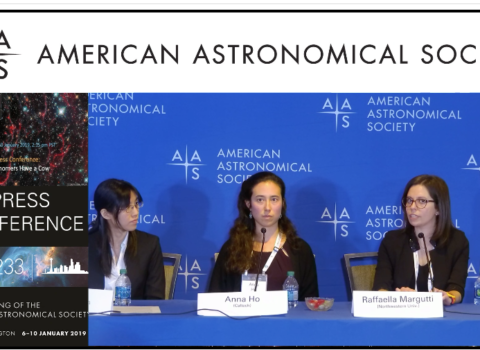
Press Conference: “Astronomers Have a Cow”
Press Conference: “Astronomers Have a Cow”
233rd Meeting of the American Astronomical Society, Seattle, WA Thursday, 10 January 2019
- Science

233rd Meeting of the American Astronomical Society, Seattle, WA Thursday, 10 January 2019
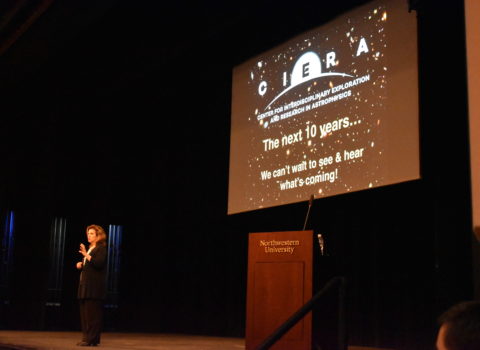
CIERA’s 10th annual public lecture was presented October 11, 2018 by director Vicky Kalogera. Kalogera’s talk–a glimpse into the years of fascinating work conducted by CIERA–highlighted key discoveries and what they mean for the future of astronomy. Kalogera discussed the lives of stars, how their influence on the Cosmos has changed in the recent decade,
CIERA / Northwestern
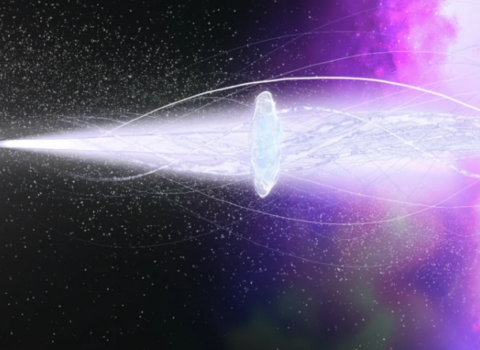
Astronomers using ALMA studied a cataclysmic stellar explosion known as a gamma-ray burst, or GRB, and found its enduring “afterglow.” The rebound, or reverse shock, triggered by the GRB’s powerful jets slamming into surrounding debris, lasted thousands of times longer than expected. These observations provide fresh insights into the physics of GRBs, one of the
National Radio Astronomy Observatory
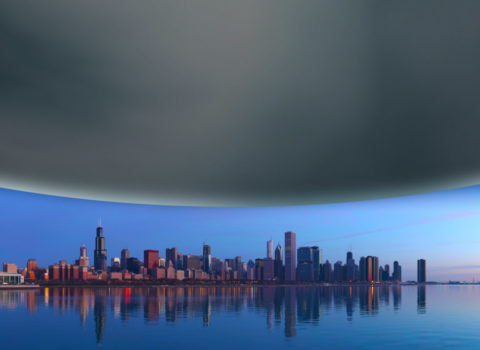
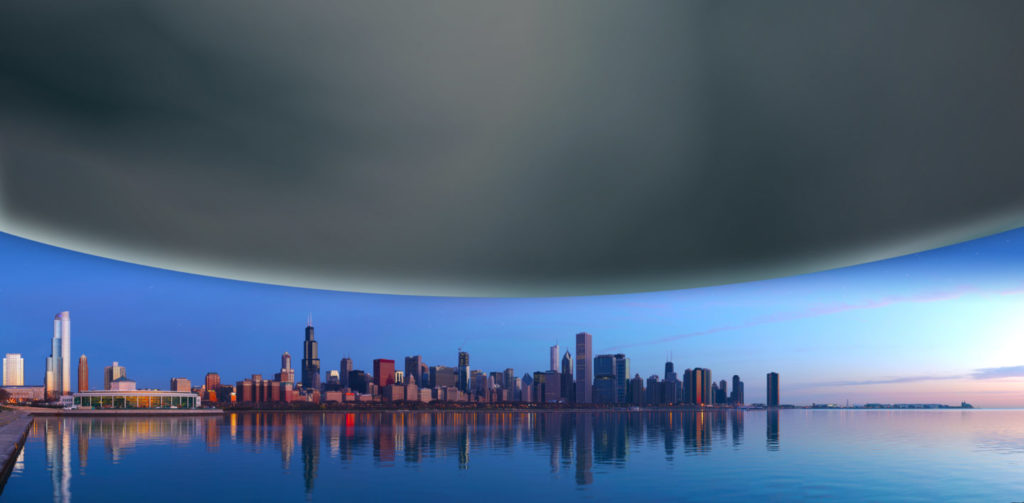
A neutron star compared with the skyline of Chicago. Neutron stars are about 12 miles in diameter and are extremely dense.
Nick Gertonson / Daniel Schwen / Northwestern / LIGO-Virgo
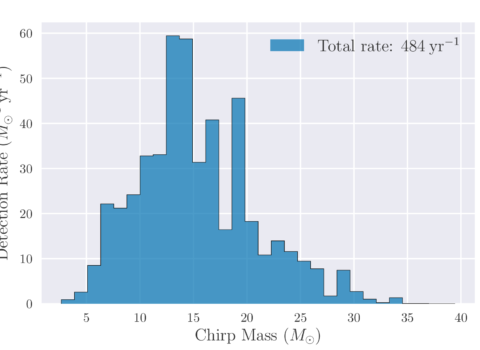
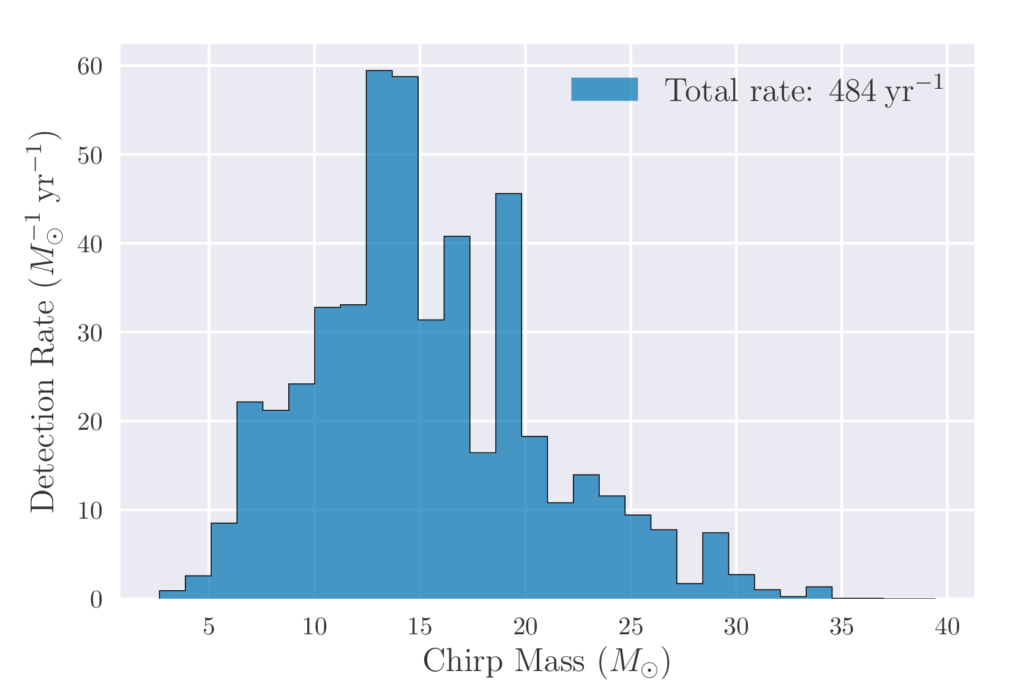
How many merger binary black holes are there? There are lots of uncertainties in our understanding of stellar evolution. This plot shows one prediction from the COMPAS population synthesis code for the number of gravitational-wave detections: there would be about 500 detections per year of observing time once our detectors reach design sensitivity! In Barrett, Gaebel,
Barrett, Gaebel, Neijssel, Vigna-Gómez, Stevenson, Berry, Farr, & Mandel (2018)
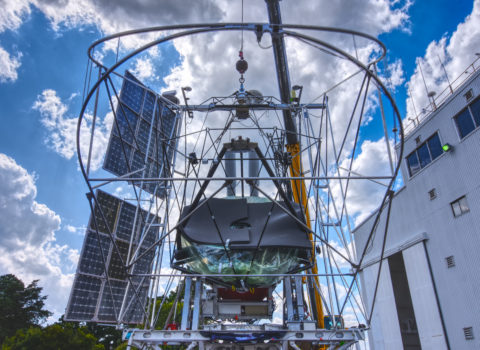
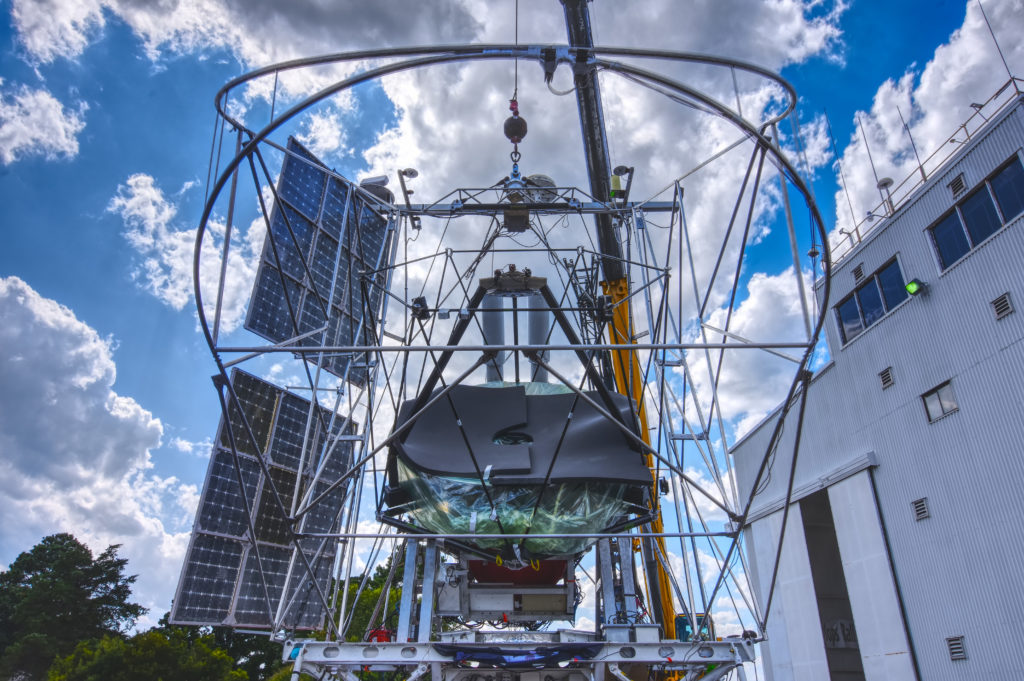
Balloon-borne Large Aperture Submillimeter Telescope – The Next Generation (BLAST-TNG) BLAST is a 5,000 pound balloon-borne telescope bound for the stratosphere over Antarctica, to search for the origins of stars and planets. This photo was taken by graduate student Paul Williams in the summer of 2018 in Palestine, Texas at the Columbia Scientific Ballooning Facility.
Gabriele Coppi / University of Pennsylvania
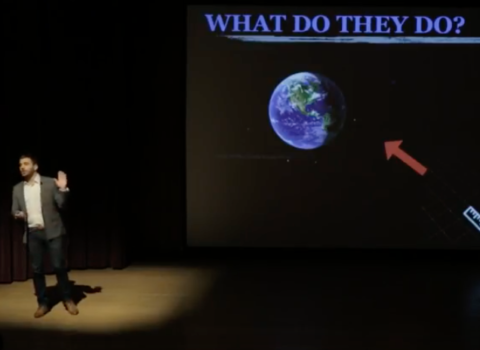
Northwestern Physics and Astronomy student Mike Zevin presents a talk as part of the Northwestern Ready Set Go (RSG) program. The goals of the program are to increase awareness for the urgent need for excellent research communicators and to coach graduate and post doctoral researchers to improve their own presentation skills. The program focuses on three important
Northwestern's RSG Program
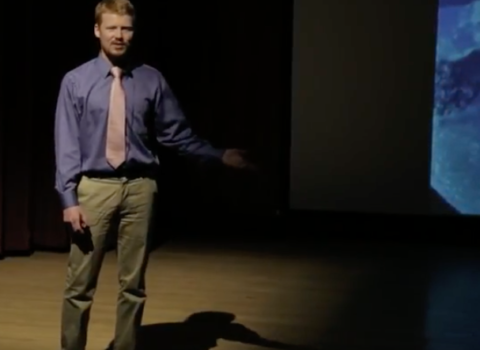
Northwestern Physics and Astronomy student Paul Williams presents a talk as part of the Northwestern Ready Set Go (RSG) program. The goals of the program are to increase awareness for the urgent need for excellent research communicators and to coach graduate and post doctoral researchers to improve their own presentation skills. The program focuses on three important
Northwestern's RSG Program
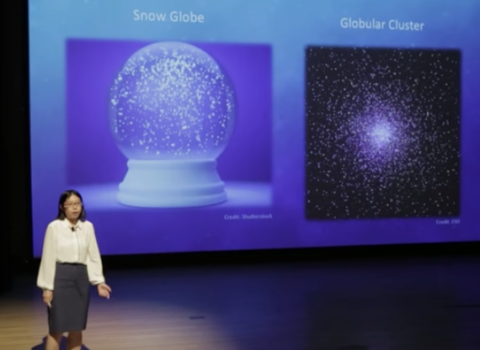
Northwestern Physics and Astronomy student Shi Ye presents a talk as part of the Northwestern Ready Set Go (RSG) program. The goals of the program are to increase awareness for the urgent need for excellent research communicators and to coach graduate and post doctoral researchers to improve their own presentation skills. The program focuses on three important
Northwestern's RSG Program
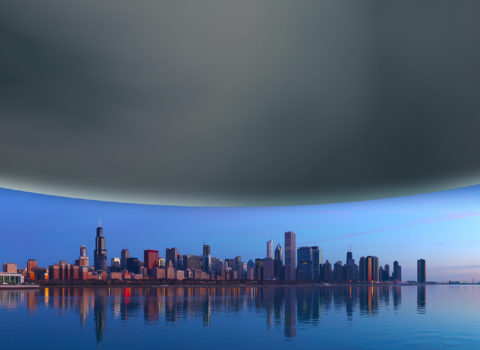
About 130 million years ago, two neutron stars collided, unleashing an explosion that rippled space-time and splattered the cosmos with a cocktail of heavy metals. Astronomers announced that they spotted the signals from that “kilonova” explosion, both in gravitational waves like the ones LIGO previously detected from merging black holes, and in signals across the
Science Friday
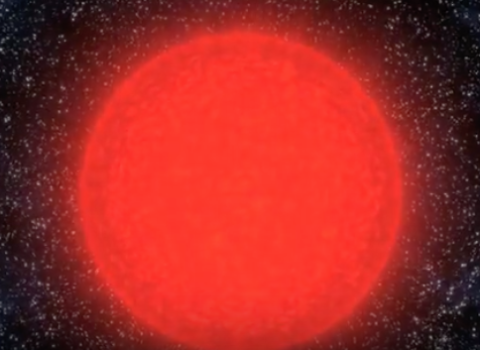
This movie shows the evolution of a star 20 times more massive than our sun. The blue color of the star’s surface visible in the first frame is the result of this higher mass.
Credit: Stellar simulation by Vicky Kalogera, Bart Willems and Francesca Valsecchi. Visualization by Matthew McCrory. Funding: NSF and LIGO
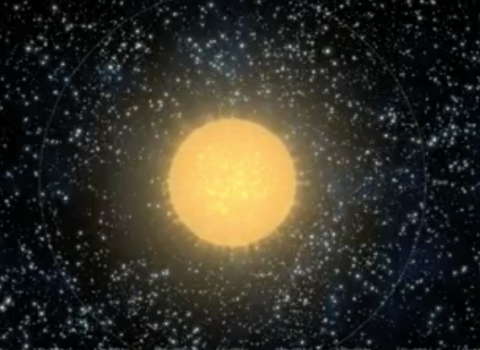
This movie shows the evolution of a star as massive as our sun. Each star spends most of its life in a phase known as the main sequence, during which it burns hydrogen into helium at its center and it slowly expands (as the reference circles show) to accommodate the energy produced via this nuclear
Stellar simulation by Vicky Kalogera, Bart Willems and Francesca Valsecchi. Visualization by Matthew McCrory. / Funding: NSF and LIGO
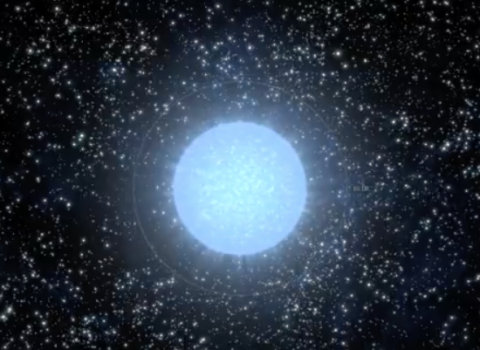
This movie shows the evolution of a star 10 times more massive than our sun. The blue color of the star’s surface visible in the first frame is the result of this higher mass. Each star spends most of its life in a phase known as the main sequence, during which it burns hydrogen into
Credit: Stellar simulation by Vicky Kalogera, Bart Willems and Francesca Valsecchi. Visualization by Matthew McCrory. Funding: NSF and LIGO
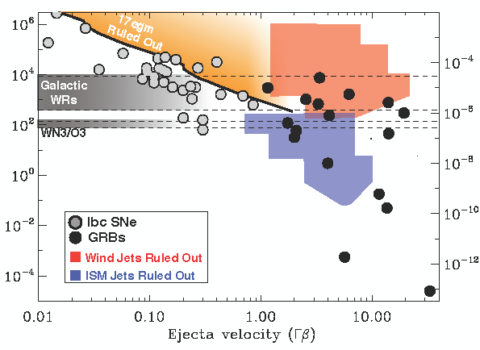
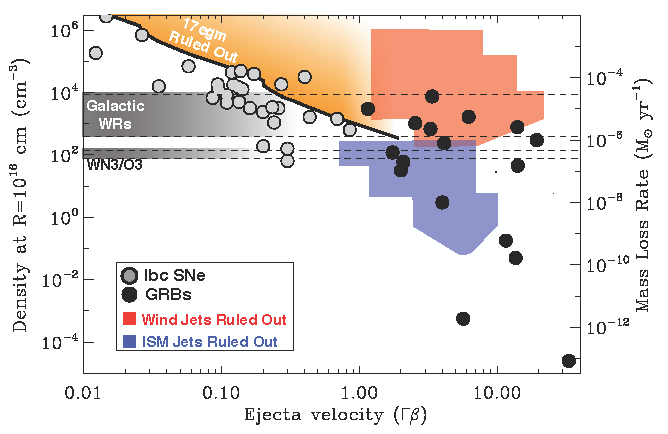
Massive stars end their lives in powerful explosions (supernovae) that span a wide range of energies and properties. The most powerful of these are the appropriately named Superluminous Supernovae (SLSNe). As SLSNe are so bright and energetic, we can see them out to great distances in the universe, and they could prove to be very
Deanne Coppejans / Northwestern
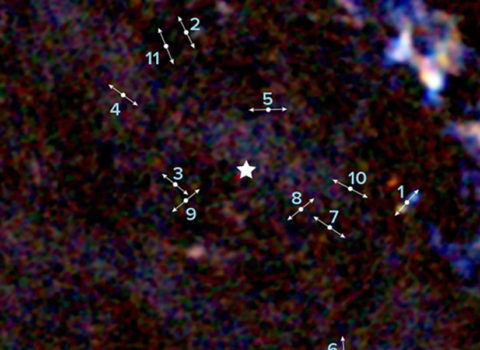
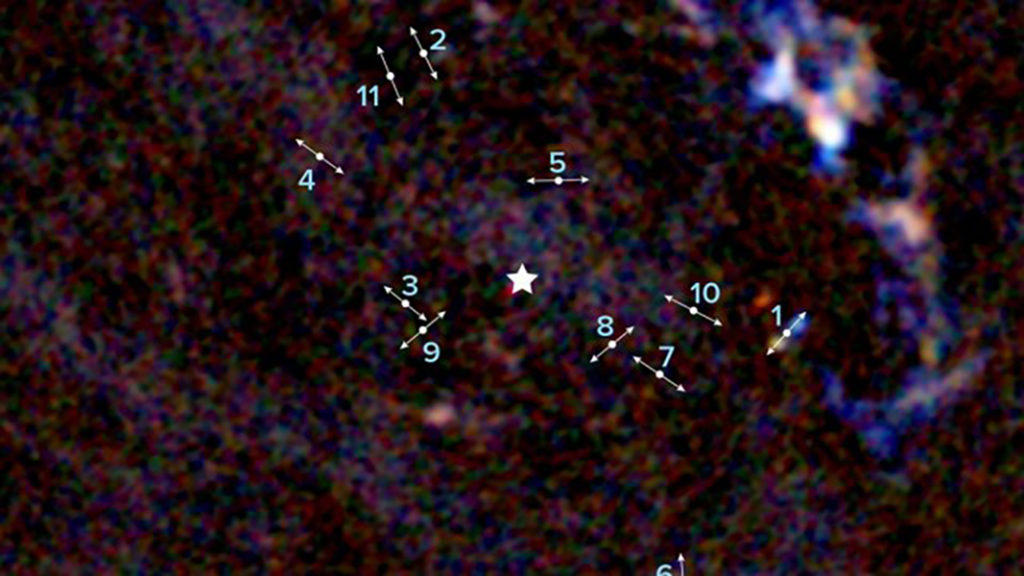
Marked on this ALMA image are the locations and orientations of 11 gas outflows, which look like the bipolar lobes made by young protostars. These outflows are all within about 3 light-years of our galaxy’s supermassive black hole, marked with a star. Outflow #1 has the most obvious structure; the rest don’t show up well
ALMA (ESO/NAOJ/NRAO), Yusef-Zadeh et al.; B.Saxton (NRAO/AUI/NSF)

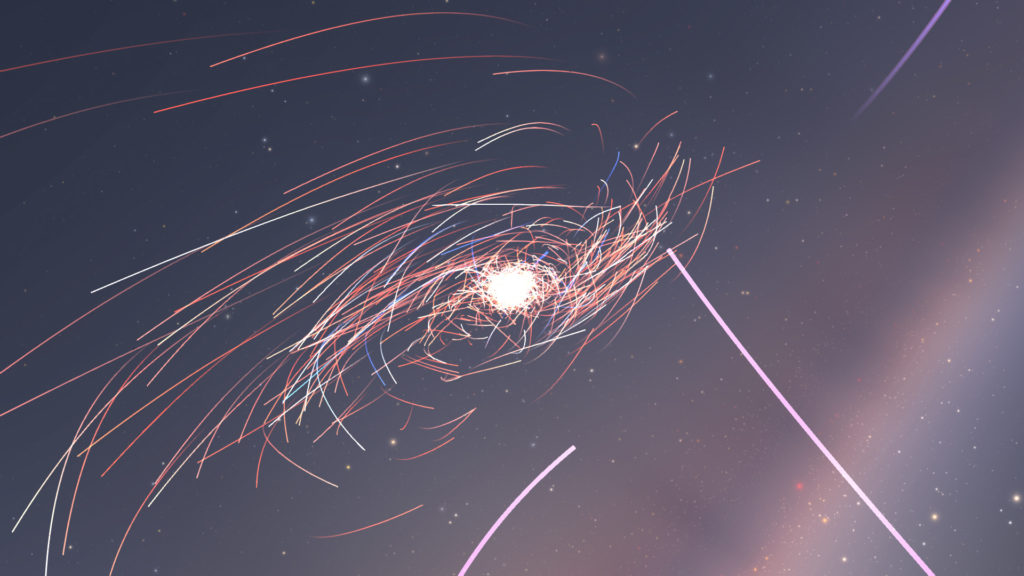
Most stars are born together in families of hundreds to thousands, known as star clusters. Over time, the pull of gravity from the galaxy can overcome the gravitational bond holding the family of stars together, shredding the star cluster apart. In this image, the lines show the paths of individual stars in a computer model
A. M. Geller and M. SubbaRao. CIERA/Northwestern
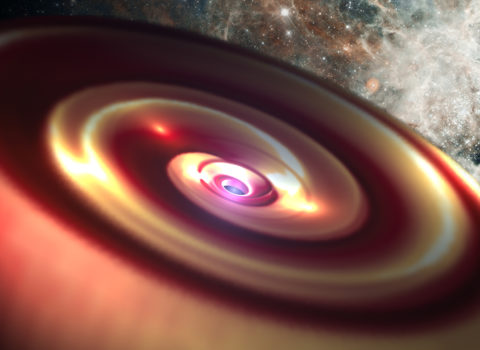
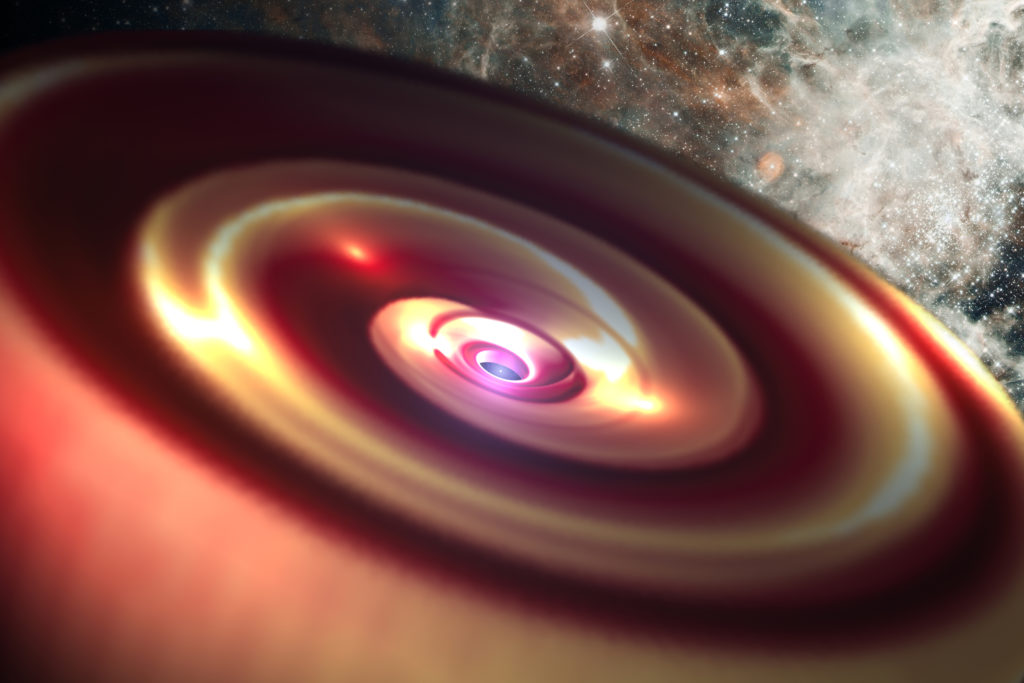
Gas-rich “proto-planetary” disks surround young, still forming stars, feeding them through accretion of dust and gas. These are the birthplaces of planetary systems. This image shows a simulation of a possible gas disk progenitor for the real exoplanetary system HR8799. Today, HR8799 has four, six-Jupiter-mass planets, 30 million years into their lives, surrounded by a
Aaron M. Geller and A. Dempsey. Simulation performed by A. Dempsey. CIERA/Northwestern
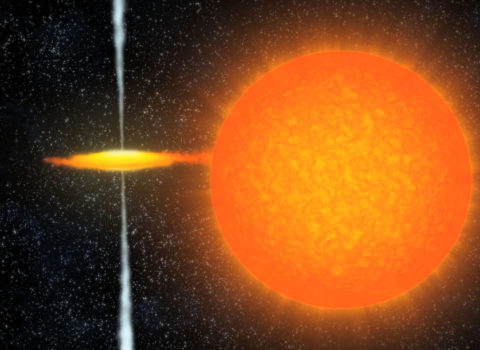

Binary systems are star systems comprising two stars orbiting around their common center of mass in a Keplerian orbit, which means that the two components are bound together by their mutual gravitational attraction. In this image, the binary system consists of a main sequence star like our sun, and a neutron star 1.4 times more
Northwestern. Stellar simulation by Vicky Kalogera, Bart Willems and Francesca Valsecchi. Visualization by Matthew McCrory.